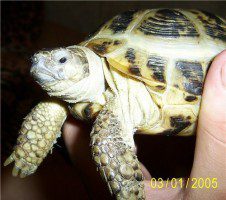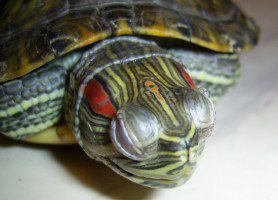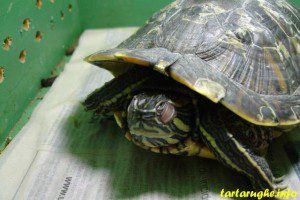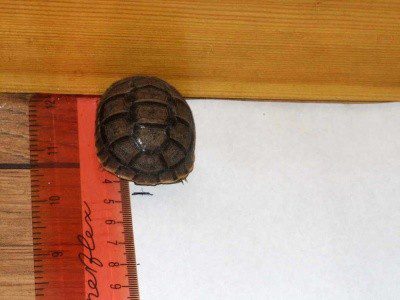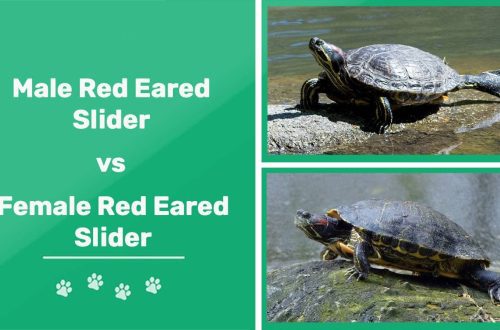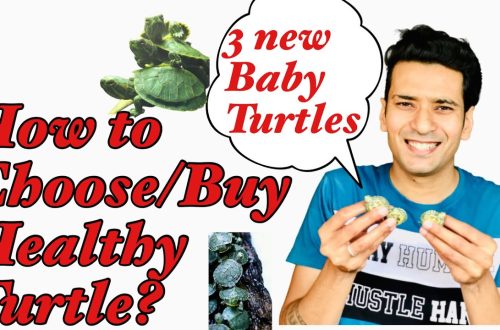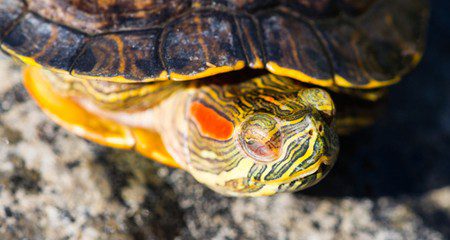
Vitamin A deficiency (hypovitaminosis A)
Symptoms: puffy eyes, shedding problems Turtles: water and land Treatment: can be cured by yourself
Vitamin A in the body of animals is responsible for the normal growth and condition of epithelial tissues. With a lack of provitamin A in the feed, turtles develop desquamation of the epithelium, especially the skin, intestinal and respiratory, conjunctiva, renal tubules (impaired outflow of urine in the kidneys) and ducts of some glands, there is a rapid complication of secondary bacterial infection and blockage of thin channels and cavities; strong growth of horny substance (hyperkeratosis), which causes the growth of ramphothecus (beak), claws and pyramidal growth of the carapace in terrestrial species.
In pregnant females, vitamin A deficiency can cause fetal developmental disorders, including anophthalmos. Turtles should always receive small doses of the vitamin, and it is better in the form of provitamins of the appropriate feed (carotene), and not artificial vitamin supplements. “Extra” vitamin A, which is not activated in the body, is toxic, is not deposited in the body in reserve and causes a whole range of disorders.
Symptoms:
Peeling of the skin, desquamation of large shields on the head and paws; exfoliation of horny scutes, especially marginal ones, on carapace and plastron; blepharoconjunctivitis, swollen eyelids; necrotic stomatitis; prolapse of cloacal organs; proliferation of horny tissue (hyperkeratosis), a “parrot-shaped” beak is characteristic. Often beriberi A is similar to bacterial diseases. Possible runny nose (snot transparent).
As non-specific symptoms, refusal to feed, exhaustion, and lethargy are usually present.
ATTENTION: The treatment regimens on the site can be obsolete! A turtle can have several diseases at once, and many diseases are difficult to diagnose without tests and examination by a veterinarian, therefore, before starting self-treatment, contact a veterinary clinic with a trusted herpetologist veterinarian, or our veterinary consultant on the forum.
Treatment:
For prevention, turtles are regularly given food containing vitamin A. For land turtles, these are carrots, dandelions, pumpkins. For aquatic – beef liver and fish entrails. Land tortoises must be given once a week vitamin supplements in powder from foreign companies (Sera, JBL, Zoomed). Top dressings are sprinkled on food or wrapped in it.
For treatment, vitamin A injections are made as part of the Eleovit vitamin complex. Other vitamin complexes are most often not suitable in composition. The injection is given intramuscularly (in the back of the body) with an interval of 2 weeks – 2 injections, with an interval of 3 weeks – 3 injections. Pure vitamin A should be contained in an injection dose of no more than 10 IU / kg. The dosage of Eleovit is 000 ml / kg. The dosage of injection Introvit in the absence of other vitamin preparations is 0,4 ml / kg one-time without re-injection.
It is impossible to drip oily vitamin preparations into turtles’ mouths, this can lead to an overdose of vitamin A and death of the turtle. It is impossible to use Gamavit vitamins, they are not suitable for turtles.
Usually, the symptoms of the disease, even in severe form, disappear within 2-6 weeks. However, if there is no obvious improvement within 2 weeks, it is necessary to prescribe antibacterial drugs (antibiotics topically and in the form of injections).
Concomitant diseases (blepharitis, blepharoconjunctivitis, dermatitis, rhinitis, etc.) are treated separately. For the duration of the treatment, all conditions (lamps, temperatures, etc.) must be created if they have not been created before.
For treatment you need to buy:
- Vitamins Eleovit | 10 ml | veterinary pharmacy (Gamavit cannot be used!)
- Syringe 1 ml | 1 piece | human pharmacy
